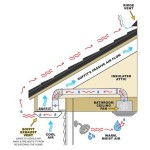How To Get Rid Of Old Bathroom Mirrors
Removing and disposing of an old bathroom mirror can appear to be a daunting task. Mirrors, being glass products, require careful handling to prevent injury and to ensure responsible waste disposal. This article provides a comprehensive guide on how to safely remove, prepare, and dispose of old bathroom mirrors, covering relevant safety measures, necessary tools, and various disposal options.
Safety Precautions and Preparation
Prior to initiating the removal process, safety should be the paramount concern. Glass shards pose a significant risk of cuts and lacerations. Therefore, appropriate protective gear is essential. This includes wearing heavy-duty work gloves, safety glasses, and long sleeves. Eye protection is crucial in preventing glass fragments from entering the eyes, while gloves protect hands from sharp edges. Closed-toe shoes are also recommended to safeguard feet from any dropped pieces of glass.
The surrounding area should be adequately prepared. Cover the floor beneath the mirror with a drop cloth or thick layers of newspaper. This will catch any falling debris, minimizing the risk of damage to the flooring and simplifying cleanup. Ensure sufficient lighting to facilitate clear visibility of the mirror and its mounting hardware.
Before commencing the mirror removal, it is important to ascertain the type of mounting system used. Mirrors are typically affixed to the wall using one of the following methods: adhesive, clips, or screws. Identifying the mounting method will dictate the appropriate removal technique. Mirrors held with adhesive require a different approach than those secured with clips or screws.
Gather the necessary tools based on the identified mounting method. A putty knife or scraper is suitable for loosening adhesive-mounted mirrors. Screwdrivers (both flathead and Phillips, depending on the screw type) will be needed for mirrors attached with screws. A utility knife can be useful for scoring around the edges of the mirror to break the adhesive bond. A heat gun or hairdryer can soften stubborn adhesives, making them easier to separate. Finally, a sturdy trash bag or cardboard box is needed for collecting and disposing of the mirror fragments.
Removing the Mirror
The removal process varies depending on the mounting method. If the mirror is attached with adhesive, begin by scoring around the edges with a utility knife to separate the mirror from the wall. Insert a putty knife or scraper behind the mirror, gently working it back and forth to loosen the adhesive. Apply even pressure to avoid shattering the mirror. If the adhesive is particularly stubborn, use a heat gun or hairdryer to soften it. Be patient and methodical in this process, as forcing the mirror can result in breakage.
For mirrors secured with clips, carefully examine the clip mechanism. Some clips may simply slide or snap open, while others may require the use of a screwdriver to loosen them. Once the clips are disengaged, gently lift the mirror away from the wall. If the mirror is also held in place with adhesive, apply the techniques described above to separate it from the wall after the clips are removed.
Mirrors attached with screws typically have screw holes concealed behind decorative caps or covers. Remove these covers to access the screws. Use the appropriate screwdriver to unscrew the mirror from the wall. Once all screws are removed, carefully lift the mirror away from the wall. Again, be mindful of any adhesive that may also be present.
In some cases, a mirror might be embedded within a frame. If the frame is attached to the wall separately, remove the frame first. This may involve unscrewing or unclipping the frame. Once the frame is removed, the mirror removal process can proceed as described above, depending on how the mirror is attached to the wall behind the frame.
When removing a large mirror, it is beneficial to have an assistant. The assistant can help support the weight of the mirror, preventing it from falling and breaking. This is especially important for mirrors that are difficult to detach from the wall.
Regardless of the mounting method, exercise caution throughout the removal process. Avoid applying excessive force, which can cause the mirror to shatter. Work slowly and deliberately, taking breaks as needed. If the mirror starts to crack or crumble, immediately stop and take extra precautions to prevent further damage and injury.
Preparing for Disposal
Once the mirror has been successfully removed, it needs to be prepared for disposal. It is highly unlikely that a standard waste disposal service will accept a full-size mirror due to safety concerns. The mirror must be made safe for handling by waste management personnel and to prevent injury to others.
If the mirror is intact, consider donating it to a local charity or resale shop, provided it is in decent condition. Many organizations accept used household items and can give the mirror a second life. Alternatively, online marketplaces or community groups can be used to offer the mirror to someone who may be able to use it.
If the mirror is damaged or unsalvageable, it needs to be broken down into smaller, manageable pieces. Place the mirror on a protected surface, such as a drop cloth or a sheet of plywood. Cover the mirror with several layers of old blankets or heavy fabric to contain the glass fragments. Use a hammer to carefully break the mirror into smaller pieces. Avoid striking the mirror with excessive force, which can cause the glass to shatter violently.
After breaking the mirror, carefully gather the glass fragments and place them into a sturdy trash bag or cardboard box. It is recommended to use a heavy-duty garbage bag and double-bag it for added protection. Securely seal the bag or box with strong tape. Label the bag or box clearly as “Broken Glass” to alert waste management personnel to the contents and potential hazards.
Smaller pieces of glass shards can be collected using a wet paper towel or a piece of bread. These methods effectively pick up even the smallest fragments, ensuring a thorough cleanup. Sweep the area thoroughly to remove any remaining debris.
Even after sweeping, glass shards may still be present. Wearing gloves, carefully inspect the area for any remaining pieces of glass. Dispose of any cleaning materials, such as rags or paper towels, in a separate, sealed bag to prevent accidental cuts.
Disposal Options
Several disposal options are available for old bathroom mirrors, depending on local regulations and the condition of the mirror. Contacting the local waste management authority or recycling center is crucial to understanding the accepted disposal methods in a given area.
Standard waste disposal services may not accept large pieces of glass. However, some municipalities offer special waste collection services for bulky items or hazardous materials. Check with the local waste management department to determine if such services are available. If so, schedule a pickup and adhere to any specific instructions provided by the department.
Recycling is a preferred option, but standard glass recycling facilities typically do not accept mirrors. Mirrors are often coated with a reflective backing that contaminates the recycling process. However, some specialized recycling facilities may accept mirrors. Research local recycling centers to determine if they offer mirror recycling services. If such a facility is available, carefully transport the broken mirror pieces to the designated drop-off location.
Construction and demolition debris disposal facilities are designed to handle large quantities of waste from construction and renovation projects. These facilities often accept broken glass and other building materials. Contact the facility beforehand to inquire about their acceptance policies and any applicable fees.
In some cases, reusing portions of the mirror may be possible. Small, intact pieces of mirror can be repurposed for craft projects or decorative purposes. Consider cutting the mirror into smaller shapes and using them for mosaics or other artistic endeavors. This option reduces waste and gives the mirror a new lease on life.
Regardless of the chosen disposal method, always prioritize safety and environmental responsibility. Properly preparing the mirror for disposal and following local regulations will help prevent injuries and minimize the impact on the environment.
By following these steps, the removal and disposal of an old bathroom mirror can be accomplished safely and efficiently. Careful planning, the use of appropriate safety measures, and adherence to local disposal guidelines will contribute to a successful and environmentally sound outcome.

How To Remove A Bathroom Mirror Lowe S

How To Safely And Easily Remove A Large Bathroom Builder Mirror From The Wall Site Title

How To Safely And Easily Remove A Large Bathroom Builder Mirror From The Wall Site Title
:strip_icc()/Design_CathieHongInteriorsPhoto_ChristyQPhotography-b2290decbe0e4d0b952f280fb7bdc896.jpg?strip=all)
How To Remove A Bathroom Mirror From The Wall

Large Mirror Removal Safely

How To Safely And Easily Remove A Large Bathroom Builder Mirror From The Wall Site Title

How To Safely And Easily Remove A Large Bathroom Builder Mirror From The Wall Site Title

How To Remove A Mirror Glued The Wall Forbes Home

How To Safely And Easily Remove A Large Bathroom Builder Mirror From The Wall Site Title

How To Frame Out That Builder Basic Bathroom Mirror For 20 Or Less
Related Posts







